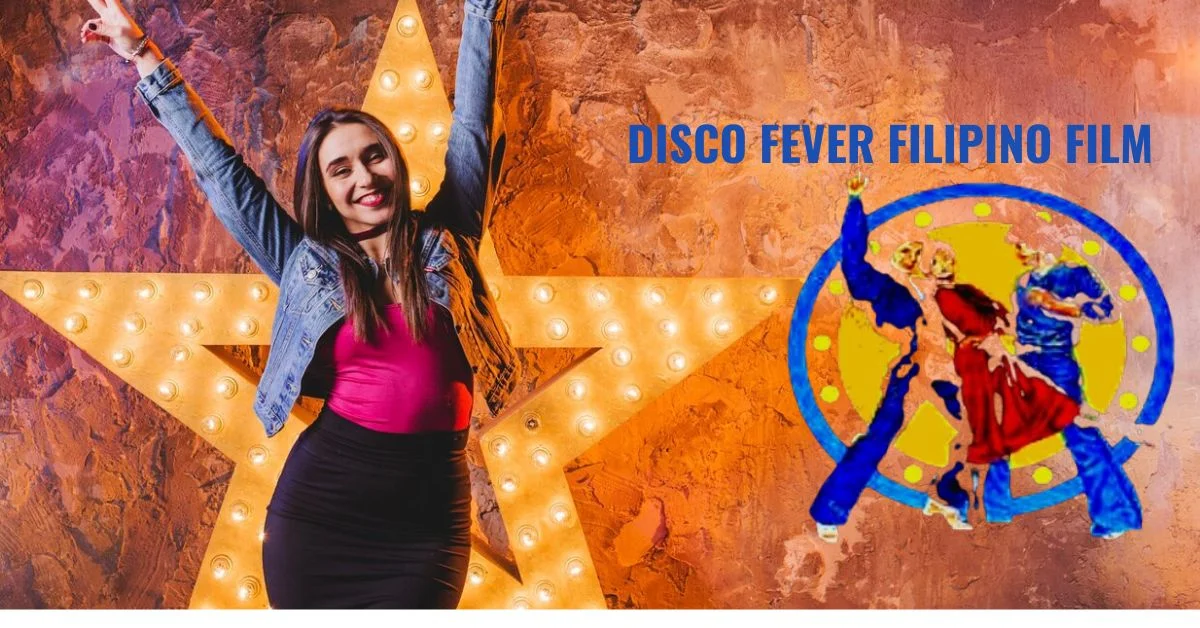Introduction to Disco Fever Filipino Film
The vibrant world of disco fever has left an indelible mark on Filipino cinema. Think shimmering lights, pulsating beats, and colorful fashion that defined a whole era. Disco fever Filipino film is more than just a genre; it’s a cultural phenomenon that encapsulates the joy, struggles, and dreams of its time. With captivating storylines set against the backdrop of rhythmic music and lively dance floors, these films transport viewers to an unforgettable period in history.
Whether you’re a die-hard fan or new to this cinematic wave, there’s so much to uncover about what makes disco fever Filipino films truly special. From their origins to their lasting impact on pop culture today, let’s dive deep into everything you need to know about this iconic genre!
History and Origin of the Genre
Disco fever in the Philippines emerged during the late 1970s, inspired by the global disco trend. This vibrant era was characterized by flashy clothes, energetic dance moves, and catchy music.
The genre blossomed against a backdrop of cultural shifts. The Philippines was experiencing political upheaval and economic challenges. Amidst this chaos, disco offered an escape—a chance to dance away worries and embrace joy.
Filipino filmmakers began capturing this phenomenon on screen. They infused local flavors into the disco narrative while drawing inspiration from Hollywood hits like “Saturday Night Fever.”
As audiences flocked to theaters, movies became a reflection of societal dynamics—celebrating youth culture while addressing deeper issues lurking beneath the surface. Disco fever films quickly gained traction as more than just entertainment; they became a cultural statement that resonated with many Filipinos longing for freedom and expression amidst turbulent times.
Evolution of Disco Fever Films in the Philippines
The evolution of disco fever films in the Philippines reflects the vibrant culture and changing social landscapes. Emerging in the late 1970s, these films captured a unique moment when disco music took over dance floors nationwide.
Initially, they showcased extravagant dance scenes paired with catchy tunes. As audiences embraced this genre, filmmakers infused local narratives into their stories. This blend made the films relatable while retaining an entertaining flair.
In the 1980s, disco fever movies began to explore deeper themes like love, friendship, and societal issues. They became more than just musical showcases; they turned into cultural commentaries that resonated with viewers.
By the late ’90s and early 2000s, nostalgia played a significant role in reviving interest in this genre. Newer generations sought to experience or understand what made disco fever special for their parents’ era.
Iconic Characters and Actors in Disco Fever Films
Disco Fever films introduced a vibrant array of characters that captured the essence of the ’70s nightlife. These personalities became cultural icons in their own right.
Among them, the flamboyant dancer often stole the show. With flashy outfits and electrifying moves, this character embodied freedom and self-expression on the dance floor.
Notably, actors like Vilma Santos and Gabby Concepcion emerged as household names through these films. Their performances showcased not only acting talent but also an undeniable charisma that resonated with audiences.
Supporting roles were equally memorable. Best friends or quirky sidekicks added humor to dramatic moments, making every film an emotional rollercoaster.
The music intertwined with these characters further enhanced their appeal. The disco beats became synonymous with love stories, friendships, and personal growth within these narratives.
Themes and Messages Portrayed in Disco Fever Films
Disco fever films often encapsulate the vibrant spirit of the late 70s and early 80s. They highlight themes of love, friendship, and self-discovery amidst dance floors overflowing with energy.
Romantic entanglements frequently take center stage, showcasing how relationships evolve in a backdrop of pulsating beats. Characters navigate their feelings while trying to find their place in a rapidly changing world.
Another common theme is resilience. Many protagonists face challenges like family pressures or societal expectations but rise above them through passion for dance and music.
The films also dig into social commentary at times, addressing issues related to class differences and identity struggles within Filipino society. These messages resonate deeply, making disco fever films not just entertaining but reflective pieces that capture the essence of an era filled with hope and change.
Impact and Influence on Philippine Pop Culture
The disco fever Filipino film genre left an indelible mark on the nation’s pop culture. It captured the vibrant spirit of the 1970s and 1980s, a time when disco music ruled dance floors across various cities.
These films popularized not just catchy tunes but also unique fashion trends. The flamboyant outfits, platform shoes, and dazzling accessories became synonymous with that era. Filipinos embraced this style as a form of self-expression.
Moreover, these movies introduced memorable catchphrases and dances that resonated deeply within communities. They fostered social connections during family gatherings or parties where everyone would mimic their favorite scenes.
Disco fever films also paved the way for numerous local artists to emerge. As they showcased Filipino talent in acting and music, many found opportunities to shine on both national and international stages.
This cultural phenomenon remains influential today. Its nostalgia continues to inspire new generations of filmmakers who pay homage through modern adaptations or references in contemporary works.
Criticisms and Controversies Surrounding Disco Fever Films
Disco Fever films in the Philippines have not been without their share of criticisms. Some viewers argue that these movies often reinforced stereotypes about disco culture, portraying it as shallow and hedonistic.
Critics also highlight how certain storylines glamorized reckless behavior, including substance use and casual relationships. This portrayal raised concerns among parents and educators regarding its influence on younger audiences.
Moreover, many filmmakers faced backlash for prioritizing commercial success over innovative storytelling. Detractors claimed this led to formulaic plots lacking depth or originality.
Controversies surrounding casting choices have also emerged. Critics pointed out that popular actors were often selected based solely on their marketability rather than acting skill, which diluted the quality of performances.
Despite these issues, Disco Fever films continue to spark discussions around cultural representation in cinema. They remain a vivid reflection of a specific era while challenging societal norms at the time.
Future of Disco Fever Filipino Film Industry
The future of the disco fever Filipino film industry looks promising. With a resurgence in interest for retro themes, filmmakers are beginning to explore this vibrant genre once more.
New technology and storytelling techniques enable directors to infuse fresh perspectives into classic narratives. This fusion can attract both nostalgic viewers and younger generations unfamiliar with the original charm.
Emerging talents are keen on experimenting within this space, bringing innovative ideas while staying true to the essence of disco culture. Collaborations between seasoned artists and newcomers could lead to exciting results.
Additionally, international platforms are becoming more receptive to diverse content. This may provide opportunities for Filipino filmmakers to showcase their work globally, expanding audiences beyond local borders.
As trends shift towards inclusivity and representation, there’s potential for rich stories that resonate deeply with various communities while celebrating an iconic era in Philippine cinema.
Must-Watch Movies for Fans of the Genre
When diving into the world of disco fever Filipino films, several titles stand out for their iconic representation of the genre. First on the list is “Disco Fever,” released in 1980. This film captures the essence of disco culture while showcasing a vibrant musical atmosphere that will have you dancing in your seat.
Another must-watch is “Kailangan Ko’y Ikaw.” This romantic comedy features a catchy soundtrack and memorable dance sequences that embody the spirit of disco fever. It’s an engaging story filled with humor and charm.
Don’t miss “Rocky” either, which blends drama and music seamlessly while revolving around community and friendship amidst personal struggles. Its infectious energy resonates well with audiences even today.
Finally, “Dancing Queen” deserves attention for its nostalgic take on 1970s nightlife, capturing both joy and challenges through its characters’ journeys.
Each film reflects unique aspects of Filipino culture during the disco era while leaving lasting impressions on viewers. So grab some popcorn, hit play, and immerse yourself in these captivating stories that defined an era!











